Product information
Hybrid inverters generate and convert direct current from the solar panels into usable alternating current for homes, while also connecting to a battery to meet energy storage needs. Autarco offers different variants of hybrid inverters, both in one and three phases.
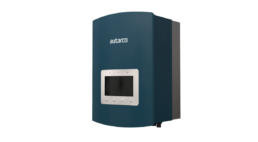
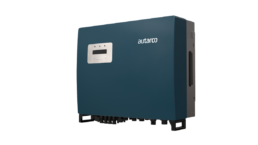
| Series | MH | LH |
| Phase | Single | Three |
| Power (kW) | 3 – 6 | 5 – 10 |
| # MPPT | 2 | 2 |
| DC INPUT/MPPT | 1 | 1 |
| Grid Voltage | 220/230 | 380/400 |
| Battery voltage | 42 – 58 (LV) | 160 – 600 (HV) |
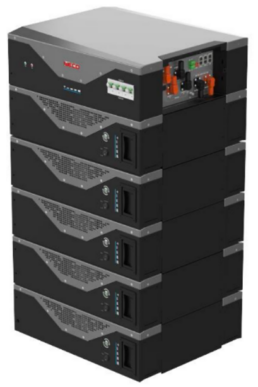
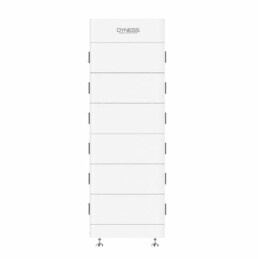
| Battery Manufacturer | Weco | Dyness |
| Model | 5K3-XP | Tower |
| Phase | Single / Three | Three |
| Module capacity (kWh) | 5.3 | 3.55 |
| Stack capacity (kWh) | 5 – 25 kWh | 7 – 21 kWh |
| Module voltage (V) | 52 Vdc | 96 Vdc |
| Cell capacity (Ah) | 100 | 37 Ah |
MR
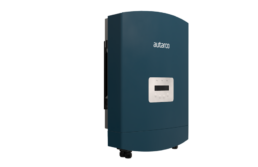
MH-MII
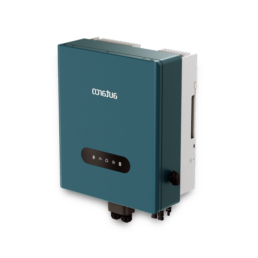
LH-MII
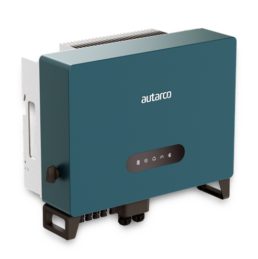
| Series | MR | MH-MII | LH-MII | LQH
TBA |
XLH
TBA |
| Phase | Single | Single | Three | Three | Three |
| Power (kW) | 3 | 3 – 6 | 5 – 10 | 12 – 20 | 29.9 – 50 |
| # MPPT | 1 | 2 | 3 / 4 | 4 | 3 / 4 |
| DC INPUT/MPPT | 1 | 1 | 1 | 1 | 2 / 2 |
| Grid Voltage | 220/230 | 220/230 | 380/400 | 380/400 | 380/400 |
| Battery voltage | 40 – 60 (LV) | 42 – 58 (LV) | 160 – 600 (HV) | 160 – 800(HV) | 160 – 800(HV) |
| Battery inputs | 1 | 1 | 1 | 1 | 2 |
Next gen hybrids will have the following capabilities,
- Parallel connection (up to 6 inverters)
- Peak shaving
- Phase balancing (over 3 phases)
- Additional options to extend battery life
- Generator connection
LV – Single phase connection
HV – Three phase connection
| Weco 5K3-XP | Dyness Tower | ||
| LV | HV | HV | |
| MR | 5 – 25 kWh | – | – |
| MH | 5 – 25 kWh | – | – |
| MH-MII | 5 – 25 kWh | – | – |
| LH | – | 20 – 25 kWh | 7 – 17 kWh |
| LH-MII | – | 20 – 25 kWh | 7 – 17 kWh |
At this point, following topologies are possible
Central Inverter (String Inverter):
- Configuration: A central inverter is a large unit that typically processes the power generated by an entire solar array.
- Operation: It converts the combined DC power from multiple solar panels connected in series (a string) into AC power.
- Advantages: Cost-effective for large installations, simple design.
- Disadvantages: Susceptible to performance losses if one panel in the string is shaded or malfunctions.
String Inverter with Power Optimizers:
- Configuration: String inverter combined with power optimizers attached to individual solar panels.
- Operation: Power optimizers maximize the energy harvest at the panel level, and the string inverter processes the DC power into AC.
- Advantages: Improved performance in case of shading or panel mismatch, some monitoring capabilities.
- Disadvantages: Moderate cost, but generally more affordable than micro-inverters.
Hybrid Inverter:
- Configuration: Combines solar inverter functionality with battery storage capabilities.
- Operation: Manages both solar power generation and energy storage, allowing for self-consumption of solar energy and backup power during outages.
- Advantages: higher energy independence, potential for cost savings by using stored solar energy during peak demand.
- Disadvantages: May be more complex and costly than standard inverters.
These topologies vary in terms of cost, efficiency, and suitability for different types of installations. The choice of inverter topology depends on factors such as the size of the solar installation, shading conditions, budget constraints, and specific energy goals. Advances in our technology continue to bring new inverter designs and topologies to the market, aiming to improve overall system performance and efficiency as demanded by our Customers.
At this point with the current models, it is not possible to connect multiple hybrid inverters in parallel. It is not possible either to pair Hybrid and PV inverters.
Still need help? Please raise a case in Helios
